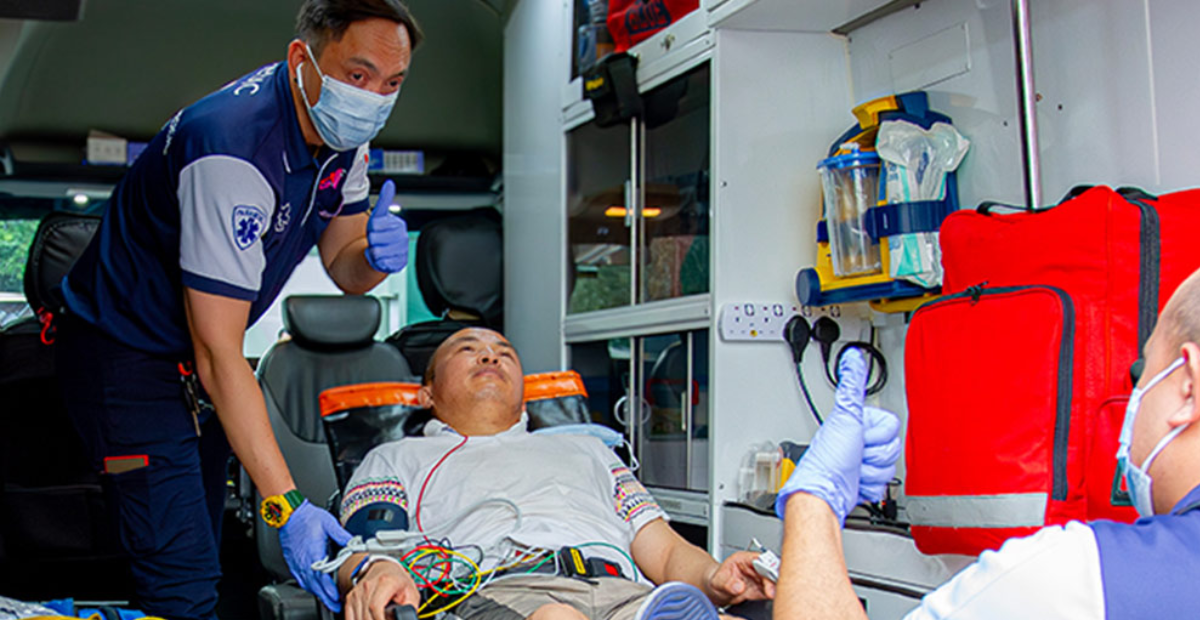The Vital Role of Ambulance Services in Modern Healthcare
Ambulance services are a cornerstone of modern healthcare, providing rapid medical response and transportation to patients in need. Whether it is a medical emergency, accident, or non-emergency medical transport, ambulance services play a critical role in saving lives and improving health outcomes. In Singapore, professional providers of ambulance services have set high standards for speed, efficiency, and patient care, ensuring that help is available whenever it is needed. Equipped with trained personnel, advanced medical equipment, and round-the-clock availability, ambulance services bridge the vital gap between emergency situations and comprehensive medical care.
Understanding Ambulance Services
Ambulance services encompass a wide range of medical transportation solutions. From emergency response to planned transfers for patients with medical needs, these services are designed to deliver immediate care in transit. Ambulances serve as mobile medical units, capable of handling a variety of situations such as cardiac emergencies, strokes, trauma cases, and routine patient transfers. Their importance cannot be overstated; timely ambulance intervention can often mean the difference between life and death.
Types of Ambulance Services
Emergency Ambulance Services
Emergency ambulance services are designed to respond to critical and life-threatening situations. These ambulances are fully equipped with advanced life support systems, defibrillators, oxygen, and medications to stabilize patients on the way to the hospital. Trained paramedics and emergency medical technicians (EMTs) accompany patients during transport, providing immediate care and monitoring vital signs. Examples include heart attacks, severe accidents, strokes, or sudden illnesses that require urgent intervention. The speed and expertise of emergency ambulance services often directly affect patient survival rates.
Non-Emergency Ambulance Services
Not all medical transport needs are emergencies. Non-emergency ambulance services cater to patients who require medical monitoring or assistance during transport but do not face immediate life-threatening situations. This includes hospital-to-hospital transfers, transportation for dialysis sessions, medical check-ups, or patients with mobility challenges. Non-emergency ambulance services ensure comfort, safety, and medical oversight throughout the journey. These services are essential for maintaining continuity of care for patients with ongoing medical needs.
Event Medical Ambulance Services
Large-scale events, such as concerts, sports tournaments, and public gatherings, often require standby medical teams to manage any health-related emergencies on site. Ambulance services provide mobile units equipped with emergency equipment and trained medical personnel to respond promptly. This proactive approach ensures the safety of participants and spectators, preventing minor incidents from escalating into serious health crises.
Advanced Equipment and Technology in Ambulances
Modern ambulance services rely heavily on technology to enhance efficiency and patient care. Ambulances are equipped with GPS systems to optimize routing and minimize response times. Real-time communication tools allow paramedics to coordinate with hospitals before arrival, ensuring that patients receive timely treatment. Advanced onboard medical equipment, such as cardiac monitors, ventilators, and emergency medications, allows paramedics to stabilize patients during transport. Some ambulance services even integrate telemedicine, allowing doctors to provide guidance remotely while the patient is in transit.
Benefits of Professional Ambulance Services
The benefits of professional ambulance services extend beyond rapid transport. Trained medical personnel provide on-the-spot care that can significantly improve patient outcomes. Ambulances also reduce the strain on emergency rooms by pre-assessing patient needs and providing stabilization en route. Furthermore, professional ambulance services adhere to strict hygiene and safety standards, protecting patients from infections and ensuring a safe journey. In countries like Singapore, these high standards make ambulance services a reliable and essential component of healthcare infrastructure.
Challenges Faced by Ambulance Services
Despite their critical role, ambulance services face several challenges that can impact effectiveness:
-
Traffic Congestion: Urban areas often experience heavy traffic, which can delay ambulance response times. Navigating through crowded streets requires skill, coordination, and sometimes, police assistance.
-
Resource Management: Balancing ambulance availability between emergency and non-emergency services is crucial. Overcommitment to non-urgent calls can compromise response times for critical emergencies.
-
Public Awareness: Educating the public about appropriate ambulance use is essential. Misuse of emergency services, such as calling an ambulance for minor issues, can strain resources and delay care for patients in genuine need.
-
Rural Access: In areas far from medical facilities, providing timely ambulance services can be challenging. Strategies like strategically placed ambulance stations and mobile clinics help address this issue.
Training and Expertise of Ambulance Personnel
Ambulance services depend on highly trained personnel to deliver effective care. Paramedics, EMTs, and drivers undergo rigorous training in emergency care, patient handling, and communication. This training enables them to assess patient conditions accurately, perform life-saving interventions, and maintain composure in high-pressure situations. Continuous professional development ensures that ambulance staff stay up-to-date with the latest medical protocols and technologies.
Ambulance Services and Patient Safety
Patient safety is a core priority for professional ambulance services. Vehicles are regularly inspected and maintained, and infection control measures are strictly enforced. Ambulance staff follow standardized protocols for handling medical emergencies, ensuring that patients receive consistent and safe care. Additionally, continuous monitoring of patient vital signs during transport allows immediate adjustments in treatment, reducing the risk of complications.
The Role of Ambulance Services During Disasters
During large-scale emergencies or natural disasters, ambulance services play a crucial role in rescue and relief operations. They provide rapid medical response, transport injured individuals, and support emergency shelters with medical supplies and personnel. Ambulance coordination is critical during disasters to ensure that resources are efficiently deployed and patients are prioritized based on the severity of their conditions.
The Future of Ambulance Services
The future of ambulance services is closely linked with advancements in technology and healthcare innovation. Some promising trends include:
-
Telemedicine Integration: Remote consultation during transit allows doctors to provide expert guidance, improving patient outcomes.
-
AI and Predictive Analytics: Artificial intelligence can predict demand patterns, optimize resource allocation, and improve response times.
-
Drones for Medical Supply Delivery: In hard-to-reach areas, drones can deliver essential medical supplies quickly, complementing ambulance services.
-
Green Ambulances: Electric or hybrid ambulances reduce carbon emissions, supporting sustainable healthcare practices without compromising response efficiency.
Conclusion
Ambulance services are an essential part of modern healthcare, providing life-saving care, rapid transport, and peace of mind to patients and their families. Whether for emergency response, non-emergency transport, or event medical support, these services ensure that professional medical attention is always within reach. In Singapore, the high standards of ambulance services exemplify the commitment to patient safety, advanced technology, and timely care. As healthcare continues to evolve, ambulance services will remain a crucial lifeline, bridging the gap between emergencies and hospitals and saving countless lives in the process.







